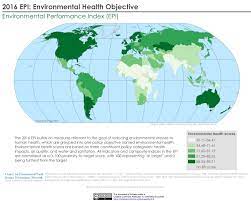This journal entry will explore stimulant medications, monitoring, and switching for adult clients. This paper aims to understand these features comprehensively and reflect on their consequences for future practice. The discussion will cover the goal/learning objective, academic resources consulted, cultural knowledge considerations, education of uninformed patients, and challenges faced in integrating this information into patient care. Each section will be examined in detail to provide insights into the rationale behind the points discussed.
Goal/Learning Objective of Stimulant Medications, Monitoring, and Switching for Adult Clients

This clinical experience aimed to develop a deeper understanding of stimulant medications, monitoring, and switching for adult clients. I sought to enhance my knowledge of the indications, mechanisms of action, side effects, monitoring parameters, and switching between different stimulant medications from the objective. By accomplishing this objective, I sought to improve my ability to provide informed and evidence-based care to adult clients who may require stimulant medications for various conditions.
The new information acquired during this experience and prior beliefs and knowledge will significantly influence my future practice. I can make informed decisions in collaboration with patients, considering their needs and preferences with a better understanding of stimulant medication.
contribute to minimizing adverse effects, optimizing medication regimens, and ensuring the best possible outcomes for my patients.
Resources from different sources
Academic Resources: Throughout this clinical experience, I broadly researched scholarly sources to expand my understanding of stimulant medications, monitoring strategies, and switching medications. In addition to the course textbooks, I explored peer-reviewed journals, reputable websites, and evidence-based guidelines.
One notable finding from these resources was the importance of tailoring medication choices to individual patient characteristics and needs. The research highlighted the significance of considering the patient’s medical history, comorbid conditions, lifestyle, and preferences when selecting an appropriate stimulant medication. Additionally, academic sources emphasized the importance of ongoing monitoring and close collaboration with patients to optimize dosing, manage side effects, and ensure therapeutic effectiveness.
Cultural Knowledge: Within stimulant medications, cultural considerations are crucial in their implementation. One artistic deliberation that could influence the performance of this knowledge is the stigma associated with mental health conditions and medication use in certain cultures. Adopting a culturally sensitive approach when discussing stimulant medication with patients is essential. Recognizing and addressing cultural beliefs, fears, and misconceptions can help improve medication adherence, facilitate open communication, and foster trust. To successfully implement this knowledge, one has to provide education and dispel myths about stimulant medications in a culturally appropriate manner.
Education: To educate an uninformed patient or an appropriate family member about stimulant medications, it is essential to provide clear and concise information tailored to their level of understanding. First, explaining the rationale behind stimulant medications is necessary, highlighting their potential benefits in improving attention, focus, and overall functioning. The discussion should include a summary of the mechanism of action, possible side effects, and the importance of adherence to prescribed regimens. Visual aids, such as diagrams or pamphlets, can enhance understanding and engagement. Addressing any concerns or questions the patient or family member may have is crucial to ensure their active participation in decision-making.
Challenges faced
Integrating the knowledge gained about stimulant medications, monitoring, and switching into patient care during this clinical experience presented some challenges. Addressing the individual variations in treatment response and tolerability was one of my challenges. Each patient responds differently to stimulant medications, and finding the optimal dose and medicine for an individual can require patience and close monitoring. Adapting to these variations and employing a patient-centered method was critical in overwhelming this challenge. Furthermore, guaranteeing effective communication and patient education regarding possible side effects and the importance of regular follow-up posed another challenge. Overpowering these challenges required active listening, ongoing patient engagement, and improved communication skills throughout treatment.
In conclusion, this journal entry has explored the topic of stimulant medications, monitoring, and switching for adult clients. The goal/learning objective, academic resources consulted, cultural knowledge considerations, education of uninformed patients, and challenges faced in integrating this knowledge into patient care were discussed in detail. Reflecting on these features, it is evident that gaining a comprehensive understanding of stimulant medications and related processes is essential for providing effective and individualized care to adult clients. The insights gained through this clinical experience will undoubtedly shape my future practice, allowing me to optimize patient outcomes and ensure their overall well-being.
References:
National Institute of Mental Health (NIMH) – ADHD: https://www.nimh.nih.gov/health/topics/attention-deficit-hyperactivity-disorder-adhd/index.shtml
American Psychiatric Association (APA) – Practice Guideline for the Treatment of Patients with ADHD: https://www.psychiatry.org/psychiatrists/practice/clinical-practice-guidelines
Centers for Disease Control and Prevention (CDC) – Medication Management for ADHD: https://www.cdc.gov/ncbddd/adhd/treatment.htmlNational Resource Center on ADHD – Medication Treatment for Adults with ADHD: https://chadd.org/for-adults/treatment/medication-treatment-for-adults/Mayo Clinic – Stimulant Medications for ADHD: https://www.mayoclinic.org/diseases-conditions/adhd/diagnosis-treatment/drc-20350889UpToDate – Pharmacotherapy for adults with attention deficit hyperactivity disorder: https://www.uptodate.com/contents/pharmacotherapy-for-adults-with-attention-deficit-hyperactivity-disorder
Stimulant Medications, Monitoring, and Switching





